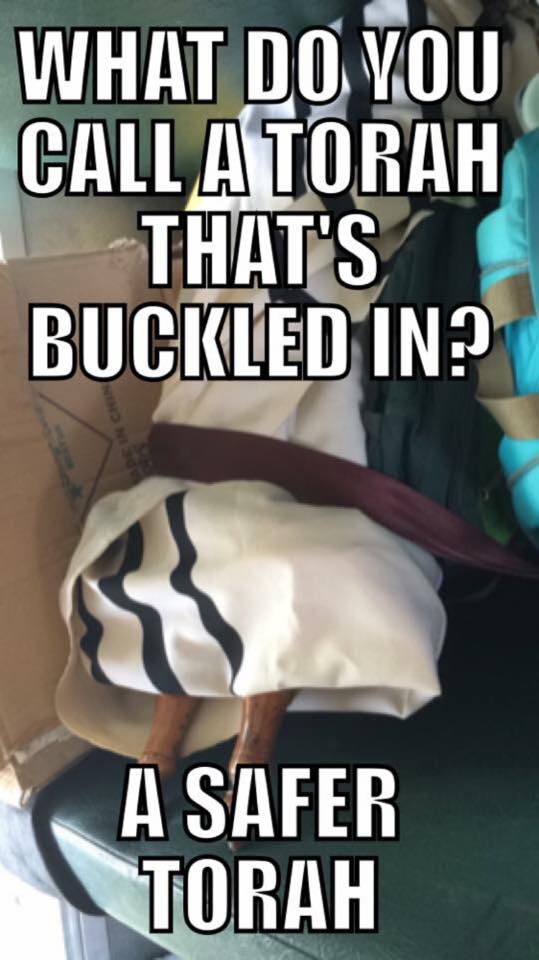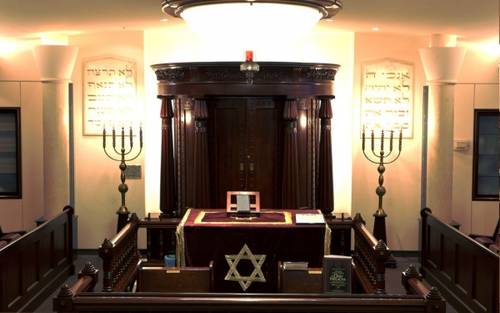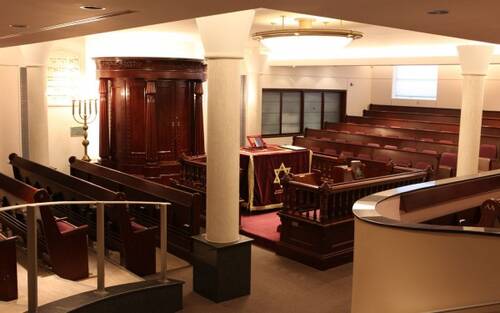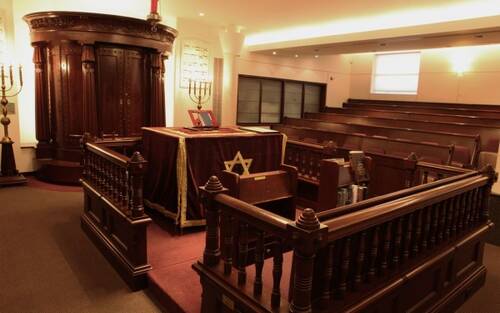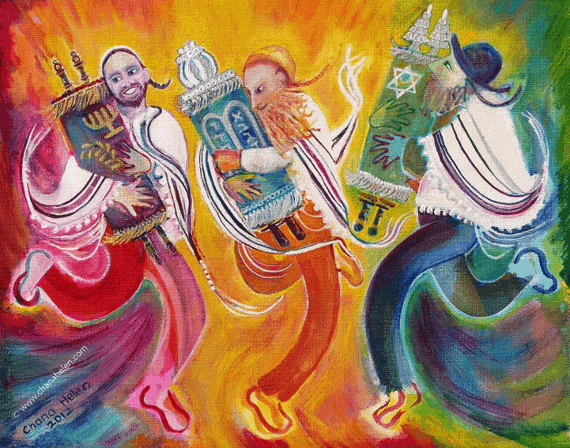Bonjour / Hello [nickname_else_first_name],
Table of contents
1) Perashat Hashavoua - Rabbi Eli Mansour
2) Halakhat Hashavoua (Halakhot related to day to day life)
Laws of SUKKOT - Hazzan David Azerad
3) Holy Jokes!
1)PERASHAT HASHAVOUA
This Week's Parasha Insight with Rabbi Eli Mansour
Sukkot- Rising with the Water
Each weekday during the holiday of Sukkkot, a special celebration was held in the Bet Ha’mikdash called the "Simhat Bet Ha’sho’eba." The people would gather in the afternoon near the Shilo’ah, a natural water spring in Jerusalem, where some water was drawn to be poured on the altar. A festive parade was held through Jerusalem accompanying the water to the Temple. When the celebrants reached the Bet Ha’mikdash, the water was handed to the Kohanim, and the people erupted in festivity. Torches were lit that illuminated the entire city of Jerusalem and beyond, musical instruments were played, and the nation’s great Sadikim would sing, dance and even juggle torches. The Sages teach, "Whoever did not see the Simhat Bet Ha’sho’eba never saw joy in his life." This celebration was unparalleled in its intensity, and it lasted throughout the night. In the morning, after the daily Tamid sacrifice was offered on the altar, the water libation was poured onto a special pipe that ran alongside the altar.
What is the meaning behind this celebration? Why did the people – particularly the Sadikim – celebrate with such fervor, and what is the significance underlying the water libation on the altar?
In the first chapter of Bereshit, where the Torah tells the story of creation, we read that the world was initially filled with water. On the second day of creation, God separated the water so that there would be air. Some water remained in the heavens, while other water – which we know as oceans, rivers, springs, lakes, and so on – was placed down here on earth. The water on earth is called "Mayim Ha’bochim" – the "crying water" – because these waters long to return to God’s presence. These waters had once existed in close proximity to God, until the world’s creation when they were separated and sent below to the earth, far from the Almighty. The waters "cry" as they desperately wish to reunite with God. The Sages teach that God compensated the lower waters through the institution of the water libation on Sukkot. By being poured over the altar as part of the service in the Mikdash, the waters return to God, to their original state of closeness with the Creator. This Misva, then, represents the concept of return and being reunited with God; the waters that had been separated from God are given the opportunity to return to Him.
Once we understand the concept of the water libation, we can easily understand why it is performed only on Sukkot – and why it was accompanied with such excitement and celebration. After the process of repentance which began in the month of Elul and continued through Rosh Hashanah and Yom Kippur, we, like the water, are reunited with God. We had become separated from the Almighty as a result of our sins, and our souls – like the water – wept and longed to return to Him. On Sukkot, we pour water on the altar, bringing the water back to God, just as we have returned to God through the process of Teshuba. And this is the greatest possible cause of joy and celebration. The Sadikim, in particular, whose highest priority and main ambition in life is to achieve closeness with God, rejoice at the Simhat Bet Ha’sho’eba to celebrate their reunion with God, their return to their spiritual source.
"Whoever did not see the Simhat Bet Ha’sho’eba never saw joy in his life." There is no joy in life that can compare with the joy of spiritual satisfaction, of fulfilling one’s purpose in life. Sukkot is the festival of joy because it comes on the heels on Rosh Hashanah and Yom Kippur, the season of repentance. When we improve ourselves and repair our strained relationship with God, we have reason to truly celebrate and experience the greatest possible feelings of genuine joy and contentment.
2) HALAKHAT HASHAVOUA
The laws of Hoshana Rabbah, according to the rulings of Maran Rabbi Ovadia Yosef ZT”L
What is Yom Hoshana Rabbah?
The seventh day of Sukkot is called "Hoshana Rabbah" , and it is the last of the 51 days given to Am Yisrael to repent (to do Teshuvah)and their Teshuvah will be accepted.On that night we study Torah and pray, and we should learn with joy and enthusiasm, because in Hoshana Rabbah the notes are given, and even on According to what was handed down, there is still a possibility to be heard on the eighth day Shemini Atzeret, so one should be awake with great Teshuvah in Hoshana Raba.
What do we do on the night of Hoshana Rabbah?
It is the custom of Am Yisrael to be awake on the night of Hoshana Rabbah, and engage in Torah learning. One should be careful not to fall asleep during the morning prayer, and his reward will be paid for his loss, and one should pray Shacharit and the Musaf with enthusiasm and joy.
After dawn,one should do Netilat Yadayim but without a Beracha, and continue to do Birchot Hashachar (the blessings of the morning )including the Torah blessings, except for the blessing of Netilat Yadayim in the case where one did not fall asleep.
Bevirkat Shabbat shalom umevorach
David Azerad
3) HOLY JoKeS!!
Selection of funny snippets, loosely related to this weeks parashah, to brighten your day
Regarding Tefilat Hageshem on Hoshana Rabah
Rain Jokes & Puns
- Rain doesn’t fall. Raindrops.
- Did you know that by law, you are required to turn on your headlights if it is raining in Sweden.
Which is great but how am I supposed to know if it’s raining in Sweden?
- It started raining coins outside today.
I guess it’s just climate change.
- Why do cows lie on each other in the rain?
To keep each udder dry.
- I don’t know if I got hit by freezing rain, but it sure hurt like hail.
Regarding Simhat Torah
